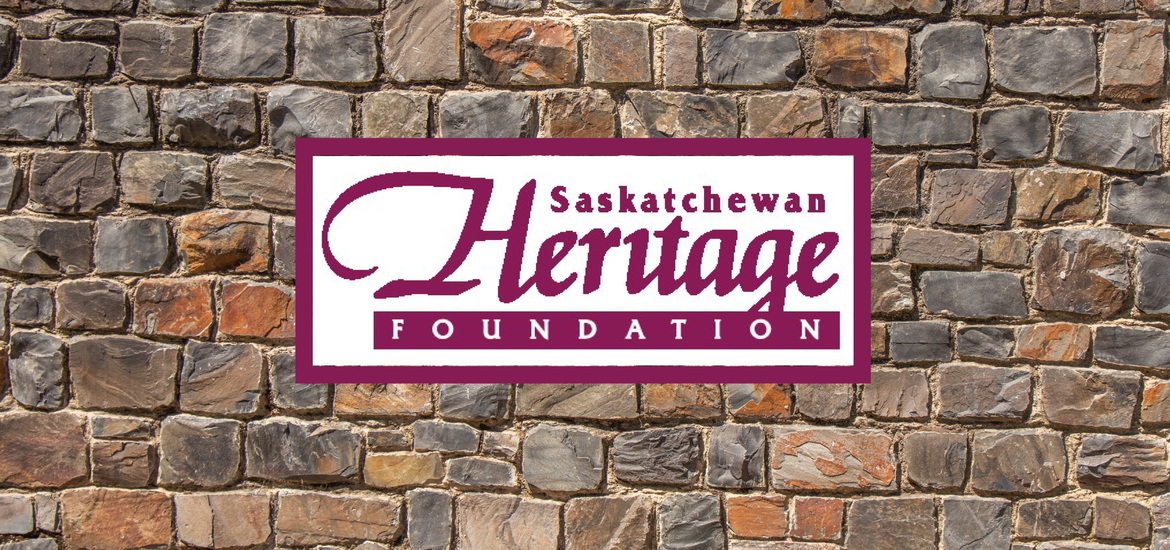2021 marks a special year for the Saskatchewan Heritage Foundation (SHF). It is celebrating its 30th year of existence, having funded hundreds of heritage preservation initiatives throughout our province. To help them celebrate, we had a conversation with Margaret Huntington, Board Chairperson, and Suzanne Pambrun, Administrator.
Q: Could you give us a brief history of the SHF?
Margaret:
The Saskatchewan Heritage Foundation provides grants to individuals, community groups, municipalities, and corporations who are working to preserve our built heritage. The SHF was established as a Crown agency on February 18, 1991, through an act of the Legislature, and is governed by a board of directors appointed by the Lieutenant Governor in Council. Since that time, 30 years ago, the Foundation has worked to support those groups in their efforts to restore and rehabilitate the properties that have meant so much to them or to their communities.
The Foundation invests in communities across the province through our grant programs. We also offer a series of useful publications (9) to help get your restoration project started.
To date, the Government of Saskatchewan has committed in excess of $10 million over the years, throughour grant programs.
Q: What is the Vision and Mission of the Foundation?
Margaret:
Vision
Saskatchewan residents value the conservation of built heritage and its contribution to sustainable communities and a richer sense of place.
Mission
To foster conservation of Saskatchewan’s built heritage for the benefit of present and future generations. To work with the Ministry of Parks, Culture and Sport, Heritage Conservation Branch, to approve nominations for the Geographic Names Program and Provincial Heritage Designations.
Q: What kind of initiatives does the SHF fund?
Suzanne: Projects that aim to restore or rehabilitate buildings that have been designated as significant for historic or architectural qualities that’s built heritage, as opposed to more general cultural heritage such as stories or art, things of that nature. We currently have two grant programs that may provide grant funding up to 50% of the eligible costs to restore the exterior only of designated heritage property or Commercial Heritage property. We do not fund anything on the interior, unless of course, it is of a structural nature, ie. Foundation issues. The programs we offer are about continuing or returning to use original material to preserve the original appearance of buildings when built. Replacing a roof with tin or asphalt when the original was wood, is not eligible for funding.
Q: Who may apply for funding?
Suzanne:
Applications are welcomed from municipalities, Indigenous communities, incorporated not-for-profit organizations, private individuals and corporations. Properties that are Federally or Provincially owned are not eligible for funding. Out-of-province applicants may apply for direct project costs related to the conservation of a Saskatchewan heritage resource.
Q: Beyond funding, are there other ways you support successful applicants?
Suzanne: I work with applicants to ensure their submission is sound and complete, and can also put current applicants in contact with past applicants with similar projects to talk about their projects. What worked, what didn’t, who they used for particular tradespeople and where they found them, etc.
Q: Why is it important to preserve our built heritage? Do you see ties between physical heritage preservation and living heritage?
Margaret/Suzanne: Absolutely, our heritage gives us a sense of continuity, or our place in the continuum of time - a feeling of belonging and pride in the accomplishments of our forefathers. It often shows us the value of quality and great workmanship that we might sometimes find rather lacking these days. Lets take for instance the environment in Europe. Why do people like to vacation and tour there? In part, it’s the history of their built environment. Although we are a young country, if we don’t start to save the early built environment, we will never have the efforts of our forefathers to explore and appreciate like Europe. We must continue NOW, to save what was given to us for future generations. Take for instance the grain elevators in Saskatchewan - what is left to explore? Most young children today assume when the older generations talk about elevators that they are talking about an elevator today that goes between floors in multi level buildings. Many have never experienced or seen a grain elevator. Not only are there stories and experiences to be told but to appreciate it first hand is something that can’t be replaced.
Q: Are there any memorable projects over the past 30 years that you consider to have had successful outcomes as a result of SHF funding?
Margaret: The Yorkton Flour Mill, which has brought the community together, and they were able to do some great community funding partly through an annual dinner that was always “sold out” prior to covid.
Many projects in Maple Creek were supported through our built grant program over the last several years and they won the Prince of Wales Prize in 2019. Announced in 1999 under the patronage of His Royal Highness, the Prince of Wales, the prize is awarded by the Heritage Canada Foundation to a deserving local government, large or small, urban or rural which has demonstrated exemplary commitment to the preservation of the built heritage within its boundaries.
The Fleming Elevator was completely restored and ready for its grand opening, when literally overnight it was lost to arson. Such a terrible and sad situation for all the residents and volunteers in that surrounding area, that worked so hard to restore a piece of their community pride.
Suzanne:
Just a few examples would be the 1923 Hip Roof Barn in the RM of Bruno; the Kerrobert Courthouse; the Hague Water Tower, and many, many more. So many community projects don’t always have the financial means available to preserve their built heritage when competing with the local arena, or road, school, water and sewer maintenance, yet alone perhaps, the first building in their community. The SHF not only may provide the financial support but the support of acknowledging their projects locally and helping the community to realize their importance.
Check out our video for the full conversation between Marieke, Suzanne, and Margaret!


